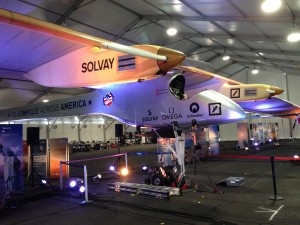By George Harvey
There is something fascinating about the idea of a solar-powered airplane. We might dream of quietly flying, without fuel, without emissions, proceeding at a leisurely pace from one airport to another.
Even some of the earliest experimental electric-powered aircraft had solar power. The first manned flight using an electric plane had a batter and solar panels to assist it. The battery could power a motor for up to five minutes. That was in 1979.
Progress was not fast, partly because of little perceived need for such a vehicle, but progress was made. In 2007, an Electravia BL1E Electra became the first electric-powered aircraft to be given an official registration.
Some of the implications are really rather amazing to think about. If an airplane can carry batteries sufficient to keep it aloft all night, and PVs sufficient to recharge the batteries during the day, it could remain in the air indefinitely. We saw this happen when a company called QinetiQ announced in the last week of 2010 that they had managed to keep a drone aircraft aloft for just over two weeks, before bringing it back to land.
Perhaps the first big story about solar-powered aircraft to capture the public imagination is about the Solar Impulse. A Swiss design, the first prototype for the craft took to the skies in December of 2009 for its first test flight in 2009. That flight was an almost unbelievable 350 miles long.
A newer model of the Solar Impulse set a record of 24-hour flight powered entirely by sunshine. That was in July of 2010.
The US public became very aware of the Solar Impulse when it flew from Mountain View, California to New York City in a series of flights between May 3 and July 6, 2013. Each flight was followed by a lengthy stay at the airport where the plane had landed.
The Solar Impulse is not a small plane. Its wingspan is 208 feet, about 13 feet more than that of the original Boeing 747. It is very light, however, weighing only about 3500 pounds. It is powered by four motors of 10 horsepower each. Its lithium-ion batteries are charged by 11,000 solar cells covering its wings. Remarkably, its takeoff speed is just less than 23 mph, and it cruises at a speed of about 35 mph.
The story is still unfolding. The Solar Impulse crew intends to construct yet another airplane, with which they mean to fly around the world. That flight will probably be in 2015. At 35 mph, it will be a very long flight with lots of layovers.









Leave a Reply